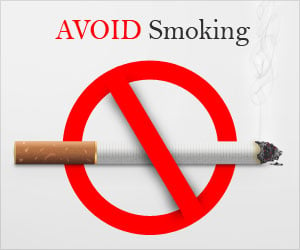From habits to health, lifestyle choices aren’t just for you; they shape your oral microbiome too!

Nepali oral microbiomes reflect a gradient of lifestyles from traditional to industrialized
Go to source).
‘Every shift in your life, from new foods to new places, has the power to reshape your oral microbiome. #oralhealth #oralmicrobiome #lifestylehabits #medindia’





Advertisement
Role of Oral Bacteria in Health and Disease
The international team revealed how the “oral microbiome” differs over a range of subsistence strategies—from nomadic hunter gatherers to farmers to industrialized groups—and found that lifestyle, as well as specific lifestyle factors like smoking, can shape the microbiome.A healthy oral microbiome, a community of microorganisms live in the mouth, plays an important role in aiding in the digestion of food, immune system support and protecting against invading pathogens, while an unhealthy oral microbiome has been linked to a variety of diseases in humans.
Advertisement
Do Lifestyle Choices Impact Oral Microbiome?
“The oral microbiome has been understudied, and most studies of the oral microbiome have been conducted in Western populations,” said Emily Davenport, assistant professor of biology in the Penn State Eberly College of Science and leader of the research team. “Although we have learned a lot from that, microbiomes look different around the world. By studying how the diversity and composition of the oral microbiome varies with lifestyle in a global context, we can improve our knowledge of how the oral microbiome impacts human health.”In a study of 63 Nepali individuals representing spectrum of dietary practices, the researchers examined how major lifestyle factors like subsistence strategy—how a person obtains the necessities of life like food and shelter—as well as more specific factors and behaviors, like smoking, may be contributing to differences in the microbiomes across populations.
“We know from previous studies that there are differences in the microbiome between individuals that live in highly industrialized, Westernized societies and those that are nomadic hunter gatherers, but there is a broad spectrum of lifestyles between those,” said Erica Ryu, graduate student in biology in the Penn State Eberly College of Science and first author of the paper. “Our understanding of these relationships so far has been clouded by geography; it’s difficult to make statements about the impact of lifestyles when you are comparing people in different countries with, for example, different climates, access to medical care, and exposure to diseases. In this study, we comprehensively investigated the oral microbiome of individuals across a range of lifestyles from the same country, Nepal.”
From Ancient Hunters to Modern Industrialists: How Lifestyle Influences Your Mouth Microbes?
The researchers studied the oral microbiomes of people from groups with a variety of subsistence strategies. These included foragers, who are hunters and gatherers and may not live in one location for the entire year; subsistence farmers who are hunter gatherers from groups that recently settled and began farming in the past 50 years; agriculturalists from groups that have relied on farming for several centuries; industrialists, who are expatriates from Nepal that immigrated to the United States within the last 20 years; as well as a group of industrialists who were born in the same area of the United States for comparison. They also asked a variety of questions about lifestyle, including diet, education, medical practices, and other behaviors.The researchers sequenced the DNA of the microbes within saliva samples to determine the specific species of bacteria within each individual’s oral microbiome. They found that the composition of species within the oral microbiome tended to follow the gradient of subsistence strategies, with some specific species more prominent in foragers and one species more prominent in the industrialists, suggesting that lifestyle does indeed impact the oral microbiome.
Link Between Smoking and Oral Microbiome
Additionally, the presence of several species of microbes were related to specific lifestyle factors, including smoking, the prominent type of grains in an individual’s diet — barley and maize vs. rice and wheat — and consumption of a plant called nettle. The researchers note that previous research has associated consistent smoking with oral microbiome composition in industrialized populations, and collectively this suggests that smoking habits play an important role in determining the oral microbiome across a variety of lifestyles.Effect of Nettle on Oral Microbes
“It makes sense that different microbes might feed on the different grains in a person’s diet, but it’s interesting that we also see an association with sisnu, also called nettle,” Davenport said. “Nettle is a fibrous plant often chewed by the foragers in this study, much like people might chew gum. Given its important role in Nepali cuisine, culture and medicine, it’s interesting to see it is associated with oral microbes.”The researchers stressed the importance of including lifestyle factors and behaviors in future microbiome studies as well as including populations from around the world.
“We studied populations in Nepal because it offered a unique way to explore the effects of lifestyle while controlling for a variety of other factors like geography that often obscure that effect,” Davenport said. “But it highlights the impact of lifestyle factors that likely play a role in other populations.
“Whenever you make a shift—whether it’s to a different diet or different location or different culture—the microbiome can change too, and it’s important to understand to what extent and how quickly these changes occur,” she added. “Continuing to investigate how oral microbiomes vary across the globe will help improve our understanding of what exactly shapes the microbiome and how that impacts human health.”
Reference:
- Nepali oral microbiomes reflect a gradient of lifestyles from traditional to industrialized - (https://microbiomejournal.biomedcentral.com/articles/10.1186/s40168-024-01941-7)
Source-Eurekalert













